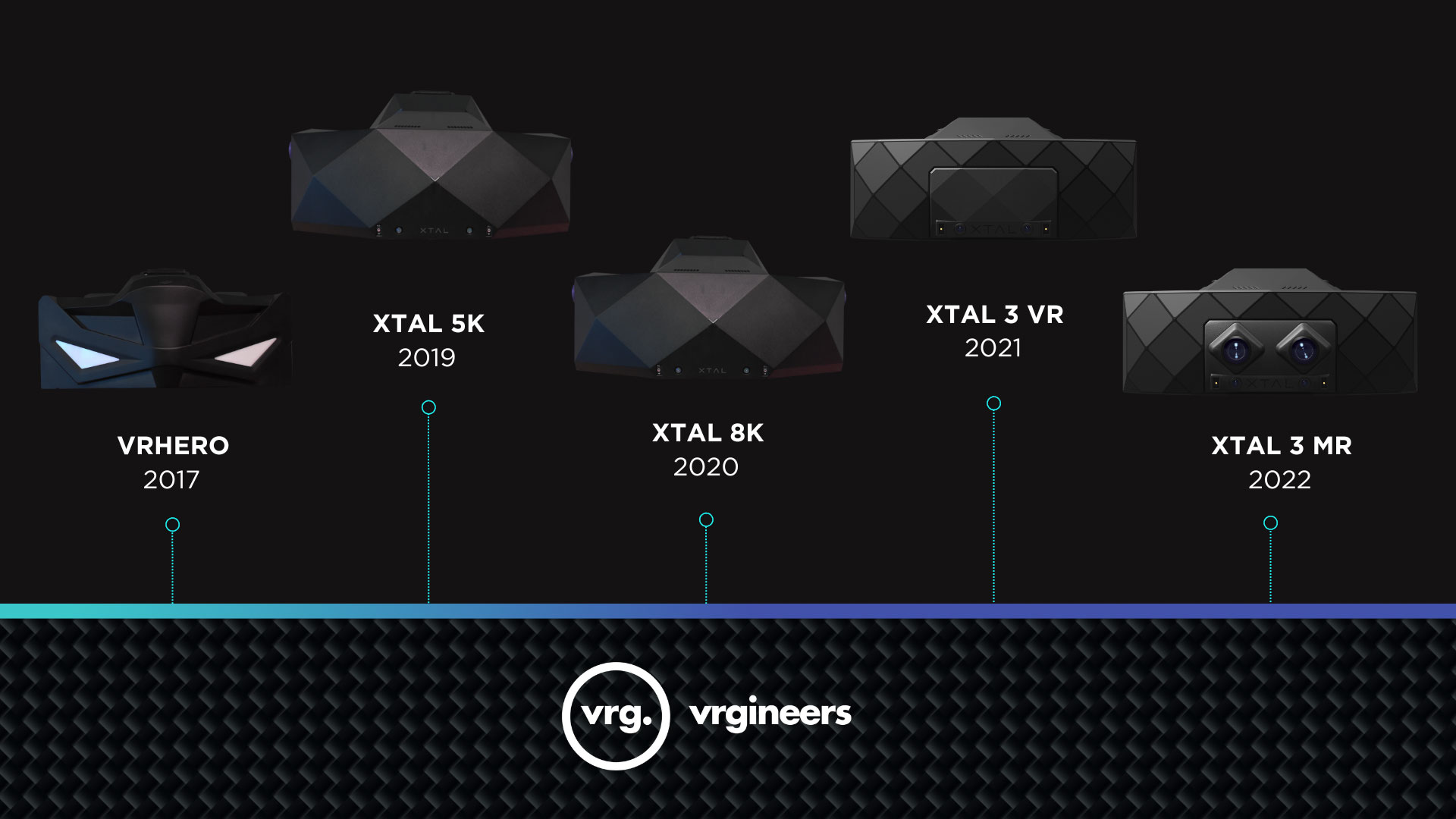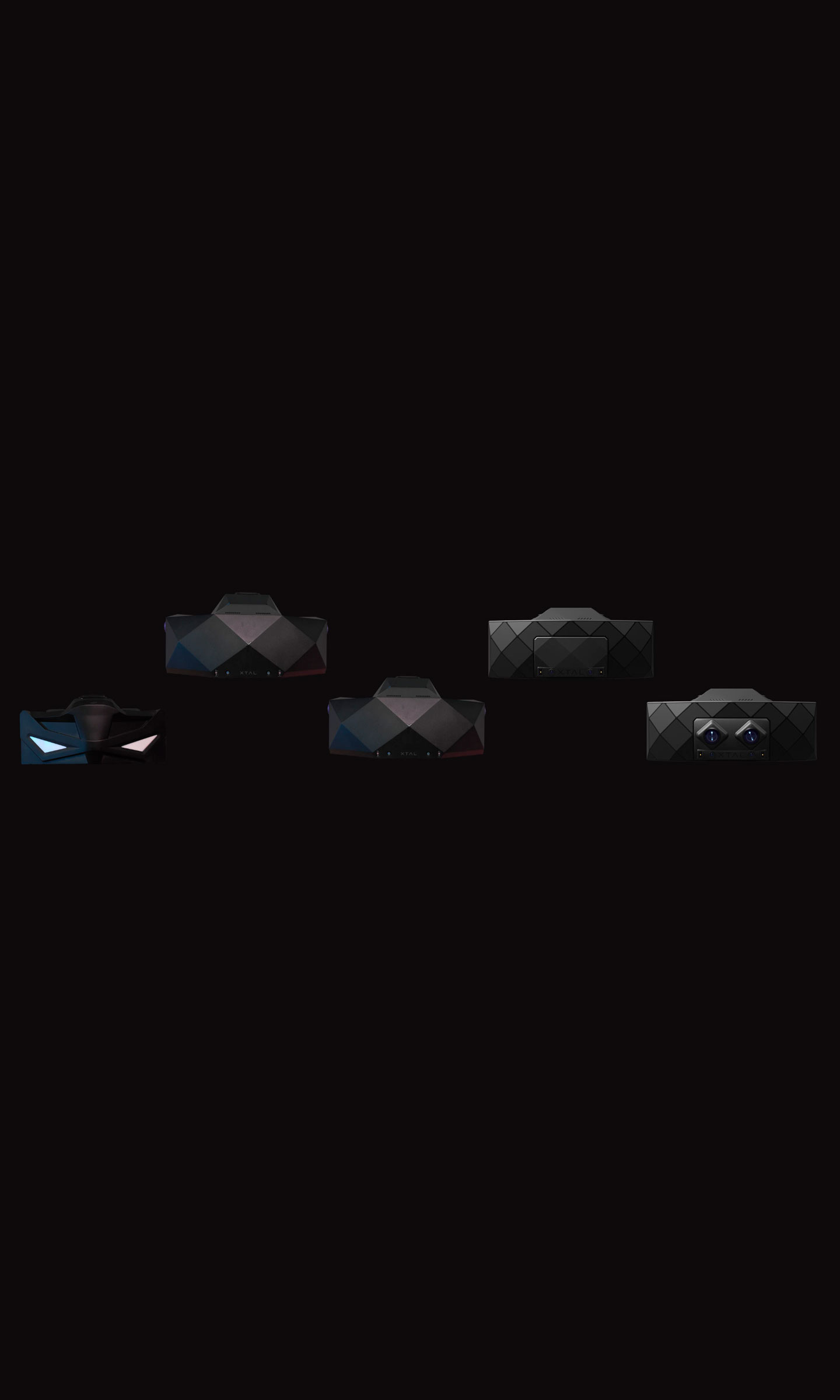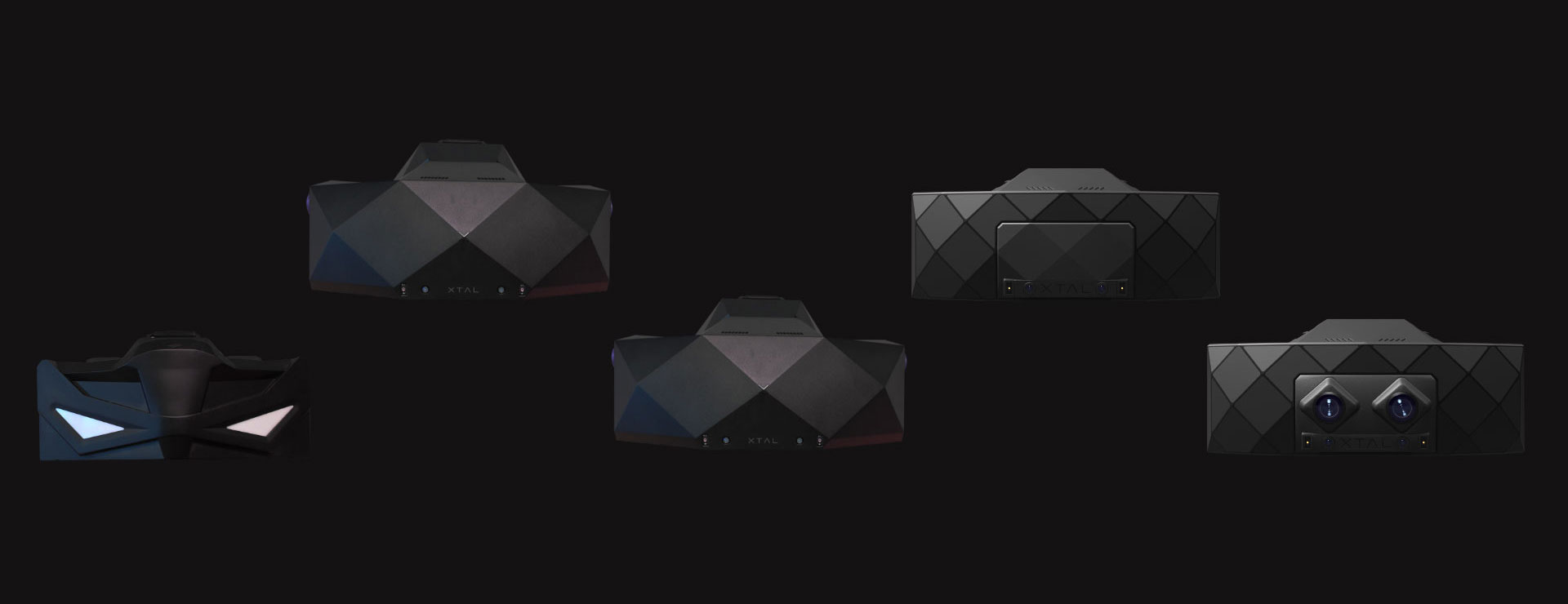2017: VRHero
Our first headset, the VRHero, was originally designed for gaming. It was the first headset equipped with a high-resolution OLED display with Full HD per eye and wide FoV, but it was rather heavy. We learned what it means to develop a headset and how much electronics need to be integrated in addition to the display and lenses.
VRHero was quite expensive due to our use of only the highest-quality components. Initially, our customer base was primarily car designers who found great value in utilizing the headset for virtual prototyping.
2019: XTAL 5K
Fast forward to 2019, when we launched the XTAL, our second-generation headset. It was named after its crystal clear image, and the goal of the XTAL was to increase image quality, improve comfort, and reduce weight. We’re proud to say that we achieved these goals, and the XTAL used 2x Quad HD fast-switching LCDs, connected via one USB and one display port. We started getting interest from pilots and instructors.
2020: XTAL 8K
In 2020, we saw even more interest from the aerospace community who wanted to use VR for training instead of the conventional data projector technology. We upgraded the XTAL with 4K fast-switching LCDs to deliver crystal-clear image quality. The headset is lightweight and comfortable, which makes it perfect for pilots and instructors.
2021: XTAL 3 VR
And in 2021, we released the XTAL 3, designed specifically for professional pilots. The headset was developed to address their main priorities such as the readability of the instruments in the cockpit, the field of vision corresponding to the situation when flying with a helmet, and above all the comfort of use.
We worked hard to make the headset lighter and more comfortable, and we also developed lenses with higher image quality and improved focus across the entire field of view. We expanded the vertical FOV to make it easier to read the entire instrument panel on the plane. In order to increase convenience, we connected the display port cable and the mixed reality cable and used one VirtualLink (USB-C alt mode) cable.
2021: XTAL 3 MR
But we didn’t stop there. In 2022, we launched our first Mixed Reality Module, the XTAL 3 MR, which allows pilots to combine physical cockpit elements with a virtual simulation for full immersion. Our mixed reality camera brings reality to life with 4K resolution to the eye, which matches the quality of the XTAL headset. And we have plans to further upgrade and improve the module even further this year.
Our journey has been all about innovation, constantly improving and refining our technology to deliver the best experience possible. And we’re not done yet – stay tuned for even more advancements from our team at XTAL!




